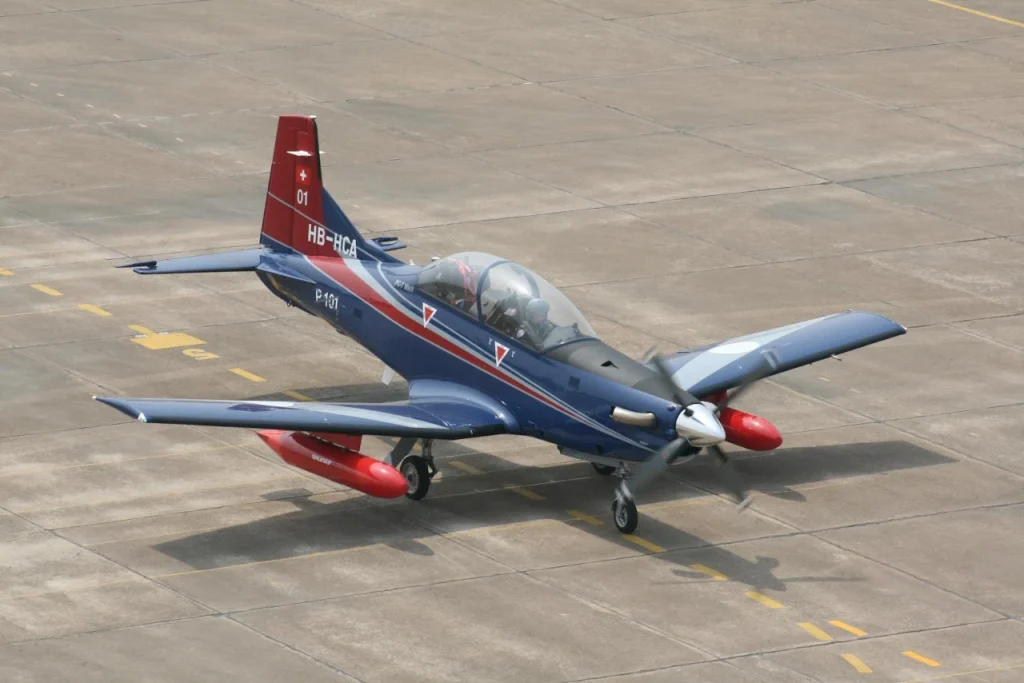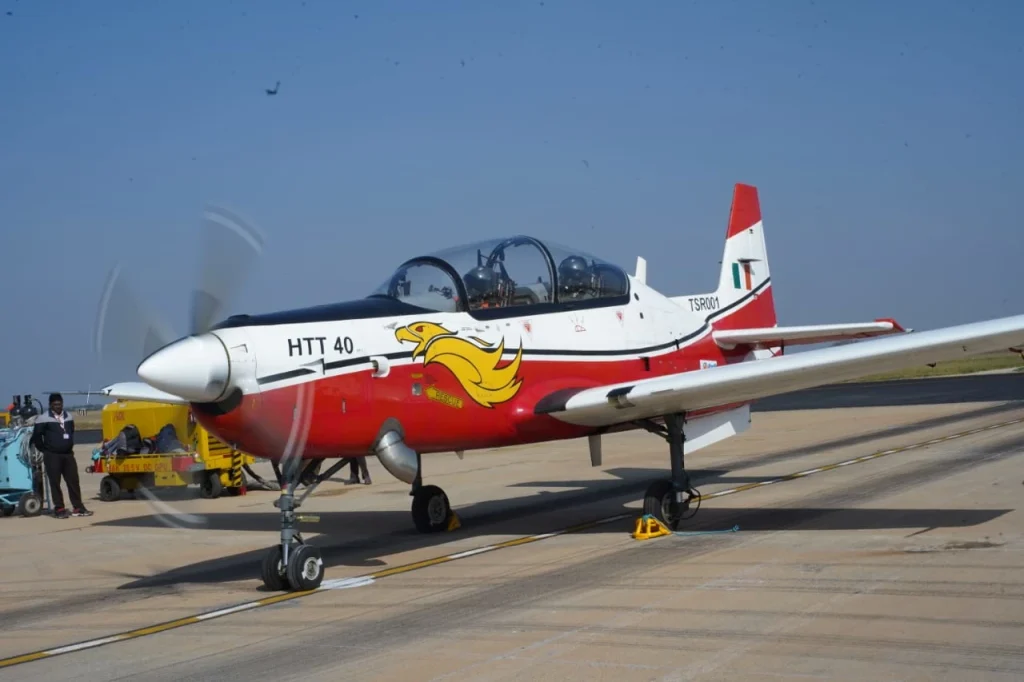The current Air Chief Marshal of the Indian Air Force (IAF), Vivek Ram Chaudhari, will ultimately not have won. The Indian Government announced on Thursday, October 20, 2022, an order for seventy indigenously-built HAL HTT-40 primary and advanced trainer aircraft. The IAF identified the need for 106 aircraft to meet the next decades’ challenges. Therefore, it will ultimately have to depend heavily on its Swiss-made Pilatus PC-7 Mk. II Turbo Trainer.
It is thus the conclusion of two years of discussions between the chief of the Indian Air Force and Rajnath Singh. This individual is India’s Minister of National Defense and a close associate of Prime Minister Narendra Modi. In actuality, Singh has never supported the HTT-40 programme, which he considers overly complicated and ultimately unsuitable for the demands of future Indian pilots. Obviously, the aircraft maker Hindustan Aircraft Limited managers don’t agree with him.
According to the minister, the Indian Air Force must train on domestically manufactured aircraft in addition to foreign aircraft. A nationalist perspective on the matter that should have found favour with the Modi administration. Indeed, the delays in the HTT-40 programme have worn down the country’s political leader’s patience.
With the purchase of seventy aircraft this week, we may conclude that HAL and the Indian Air Force are saving the day. The aircraft manufacturer has pledged to deliver the first fifteen aircraft in 2022. The complete fleet is expected to be operational by the end of 2025. The truth remains that seventy instead of one hundred and six aircraft is a significant gap in HAL’s projections. Especially given that the aircraft does not seem designed for the international market.
Beating Hegemony
The military market for single-engine turboprop training aircraft is dominated by three aircraft manufacturers globally: Beechcraft in the United States, Embraer in Brazil, and Pilatus in Switzerland. However, some aircraft manufacturers are attempting to defy this monopoly by developing sporadic projects, often for local markets. This is the case with Hindustan Aircraft Limited in India, which spent ten years developing an already controversial aircraft: the HTT-40.

HAL’s decision to develop a single-engine primary and intermediate turboprop trainer at the start of the 2010s was not predetermined. Destiny chose differently. Aware of the risk presented by its HPT-32 Deepaks, which have been in service since the first part of the 1980s, the Indian Air Force decided in the summer of 2009 to remove them from the operation. In the last quarter-century, twenty-nine student pilots and instructors have perished in incidents largely blamed on the aircraft themselves. Urgent action was required to identify a suitable replacement.
Therefore, the Indian national aircraft manufacturer initiated the HTT (Hindustan Turbo Trainer) programme. The Indian Air Force plays the scalded cat only when referring to a foreign aircraft. The very efficient Pilatus PC-7 Mk II Turbo Trainer manufactured in Switzerland was chosen. It did not exclude the HTT programme, which may serve as an intermediate training aircraft. Beginning in 2011, the future aircraft was given the designation HTT-40.
On the level of aesthetics, the designers did not go very far in terms of innovation, with the aircraft substantially mirroring anything manufactured at the time. The chosen turboprop is an American Honeywell Garrett TPE331-12B with 963 horsepower and a four-blade metal propeller. In addition, the HTT-40 featured retractable tricycle landing gear and a low cantilever wing. The aircraft is not meant to carry any weapons.
The student pilot and teacher occupy a tandem, enclosed cockpit with a raindrop canopy. Zero-0 type ejection seats are functional at zero altitudes and zero velocity. Therefore, crew members may eject to the ground while the aircraft is resting.
On May 31, 2016, the prototype of the HAL HTT-40 performed its first flight in this configuration. Unfortunately, the Pilatus PC-7 Mk-II Turbo Trainer was already performing vital functions. The Indian instructors like the dependability of the Swiss aircraft. A few weeks after this first flight, the Indian Air Force advised the Indian Government that the HTT programme be terminated. HAL then engaged in negotiations to rescue its training aircraft. Based on the (relative) export success of the KAI KT-1 Woongbi, the South Korean manufacturer HAL has announced that the HTT-40 would find markets outside India. The HTT-40 was saved.

Then, a series of discussions proceeded to determine the aircraft’s future role in the Indian Air Force. The HAL HTT-40 was ordered in August 2020 for 70 units as a future basic training and aerobatic training aircraft that is not intended to carry armaments. Once in service, the HTT-40s will serve as intermediate training aircraft. An option for 38 more aircraft was also placed.
Nonetheless, the industrial programme experienced considerable delays due to the Covid-19 epidemic. The Indian-type certification required for an aircraft to serve in the Indian Air Force was to be granted by the end of August 2021.
Notably, HAL currently offers the aircraft for export with a 500-kilogram combat load consisting of machine gun pods under the fuselages and rockets in baskets under the wings. Therefore, the aircraft would be used for shooting practice, except that no viable client has emerged even by the beginning of 2022. The Indian Navy has been offered the aircraft to replace its HJT-16 Kiran fighters.
The HAL HTT-40 is now one of the most important Indian aeronautical projects. It was created in a rush due to the urgency of the situation. However, the likelihood of future export sales is small owing to intense worldwide competition.
